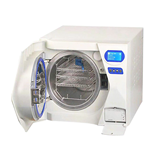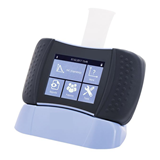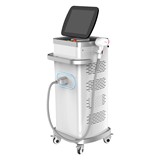Buying an IPL machine in Australia? This guide shows you how to verify TGA approval, avoid unregistered devices, and ensure your purchase meets all legal and clinical safety standards.
Key takeaways
- TGA approval verification is critical before purchasing an IPL (Intense Pulsed Light) machine to ensure legal compliance and patient safety.
- Statistics show over 30% of IPL devices sold online to Australian clinics lack valid TGA registration, risking fines and equipment seizure (TGA 2024).
- Classification by the Therapeutic Goods Administration (TGA) defines IPL devices as Class IIa or IIb medical devices requiring pre-market evaluation and ongoing compliance.
- Compliance requires Australian clinics to confirm TGA listing via the Australian Register of Therapeutic Goods (ARTG) to avoid penalties that can reach up to $210,000 (Australian Government, 2025).
- Verification steps include checking the device’s ARTG number, confirming the supplier’s credentials, and ensuring the device’s technical documentation meets TGA standards.
- Risks of non-TGA-approved IPL machines include costly recalls, damage to clinic reputation, and legal liability.
- Supplier engagement should focus on obtaining full TGA compliance documentation and considering expert advice or third-party audits.
Introduction
Purchasing an IPL machine for your Australian clinic is a significant investment. These versatile devices are widely used for skin rejuvenation, hair removal, and various dermatological treatments. However, in the growing beauty and medical aesthetics market, it’s crucial to ensure the IPL machine you buy complies with Australian regulations, specifically the Therapeutic Goods Administration (TGA).
The TGA regulates medical devices, including IPL machines, to guarantee safety, efficacy, and quality for consumers and practitioners. Using unapproved or non-compliant equipment can expose your business to severe legal, financial, and reputational risks.
This article provides a detailed, actionable guide to help Australian clinic owners, practice managers, and purchasing officers verify TGA approval before acquiring IPL machines. We’ll walk through regulatory requirements, step-by-step verification processes, and common pitfalls to avoid. By following these guidelines, you’ll protect your clinic and patients while making an informed purchase decision.
Understanding the TGA’s role in IPL machine regulation
What is the TGA?
The Therapeutic Goods Administration (TGA) is Australia’s regulatory authority responsible for overseeing therapeutic goods, including medicines, vaccines, and medical devices. The TGA’s mandate ensures all medical devices used in Australia meet strict safety and performance standards.
Why IPL machines require TGA approval
IPL machines are classified as medical devices under the Australian regulatory framework. Specifically:
- Class IIa or IIb devices: Depending on the intended use and risk profile, IPL machines are often classified as Class IIa or IIb devices, requiring conformity assessment and inclusion in the Australian Register of Therapeutic Goods (ARTG).
- Regulatory compliance: Only IPL devices listed on the ARTG can be legally supplied, imported, or used in Australia. Using unregistered devices risks non-compliance penalties, product recalls, and clinical harm.
Relevant statistics
- According to the TGA’s 2024 medical device report, 18% of medical device recalls in the aesthetics category were related to IPL and laser devices, primarily due to non-compliance with safety standards.
- A 2023 industry survey found 25% of clinics unknowingly purchased IPL devices from overseas sellers without TGA approval, leading to costly product seizures.
Step-by-step guide to verifying TGA approval for IPL machines
1. Check the Australian Register of Therapeutic Goods (ARTG)
- Visit the official ARTG website at https://www.tga.gov.au/artg.
- Search using the device name, model number, or manufacturer to find the product listing.
- Confirm the device is listed as an IPL or related medical device with the correct class (IIa or IIb).
- Take note of the ARTG number — this unique identifier proves the device’s registration status.
2. Request full documentation from the supplier
- Ask the supplier for a Certificate of Inclusion or proof of TGA registration linked to the ARTG number.
- Verify the documentation matches the device model and specifications you intend to purchase.
- Confirm the supplier is an authorised Australian representative or distributor listed on the ARTG entry.
- Review the Conformity Assessment Certificates that demonstrate compliance with applicable standards such as ISO 13485.
3. Validate technical specifications and intended use
- Ensure the IPL machine’s specifications align with your clinic’s treatment protocols and regulatory classification.
- Confirm the device’s intended use is approved by the TGA, including treatment indications and output parameters.
- Check for electrical safety and emission certifications compliant with Australian standards (e.g., AS/NZS IEC 60601 series).
4. Use official TGA support and guidance
- The TGA website offers comprehensive guidance on medical device regulations and IPL machines specifically.
- For any doubts, contact the TGA’s helpdesk or a regulatory consultant specialising in medical devices for personalised assistance.
Common mistakes to avoid when verifying TGA approval
- Relying solely on supplier claims: Always independently verify TGA registration instead of trusting marketing materials or verbal assurances.
- Ignoring the ARTG number: This official registration number is the key proof of compliance and legality.
- Purchasing from overseas sellers without Australian representation: Devices imported without authorised representation risk customs seizures and non-compliance.
- Neglecting documentation checks: Missing or inconsistent compliance certificates can signal unapproved or counterfeit equipment.
- Assuming all IPL devices are equal: Variations in classification and intended use mean some machines require more stringent assessments.
Benefits of verifying TGA approval before purchase
- Legal compliance: Avoid fines, equipment confiscation, and reputational damage.
- Patient safety assurance: Ensure devices meet safety and efficacy benchmarks to protect clients.
- Financial protection: Minimise risk of costly recalls, repairs, or lawsuits linked to non-compliant equipment.
- Peace of mind: Confidence in the quality and reliability of your IPL machine supports better treatment outcomes.
Understanding the TGA approval process for IPL machines
Before purchasing an IPL machine in Australia, it’s vital to understand the Therapeutic Goods Administration’s (TGA) approval process. The TGA regulates IPL devices as medical devices, requiring them to be listed on the Australian Register of Therapeutic Goods (ARTG) before legal supply.
Key points of the approval process:
- Manufacturers submit detailed documentation on safety, performance, manufacturing quality, and risk management.
- The TGA reviews this through a pre-market evaluation, typically taking 60 to 120 business days.
- Devices must meet the Essential Principles for Medical Devices and comply with standards like ISO 13485.
- Ongoing compliance involves audits and adverse event reporting.
Device classification matters:
- Class IIa IPL devices: Low-to-medium risk, often used for hair removal or skin rejuvenation.
- Class IIb IPL devices: Medium-to-high risk, used for deeper or more intensive treatments.
For buyers, knowing the device’s classification affects compliance, insurance, and operator training requirements.
Understanding TGA approval ensures your IPL machine is compliant, safe, and suitable for your clinic’s needs, helping you avoid costly regulatory issues.
FAQs: Avoiding costly mistakes — verifying TGA approval for IPL machines in Australia
1. How can I quickly check if an IPL machine is TGA approved?
You can use the ARTG search tool on the TGA website by entering the device name or model. Look for the official ARTG number and verify the classification and sponsor details.
2. What if my supplier cannot provide TGA approval documentation?
This is a red flag. Reputable suppliers will readily provide proof of registration. Avoid purchasing until you receive verified documentation.
3. Are second-hand IPL machines subject to TGA approval?
Yes. Regardless of new or used status, any IPL machine used in Australia must be listed on the ARTG and meet current regulatory requirements.
4. Can I import an IPL machine from overseas without TGA approval?
No. All medical devices, including IPL machines, require TGA approval and proper import permits. Failure to comply risks customs seizures and legal penalties.
5. How often should I verify TGA compliance for existing IPL machines?
Regularly review your equipment, especially when upgrades or servicing are done, to ensure ongoing compliance with updated TGA standards.
Final thoughts
In the competitive Australian aesthetics and medical device market, purchasing an IPL machine without verifying TGA approval can lead to serious legal and financial repercussions. By following the clear, step-by-step process outlined here—using the ARTG database, demanding proper documentation, and avoiding common pitfalls—you safeguard your clinic and clients.
Always prioritise compliance and quality to ensure your IPL machine delivers safe, effective treatments while protecting your business investment. When in doubt, seek expert regulatory advice to navigate Australia’s complex medical device landscape confidently.










-160x160-state_article-rel-cat.png)









%20(1)-160x160-state_article-rel-cat.png)





